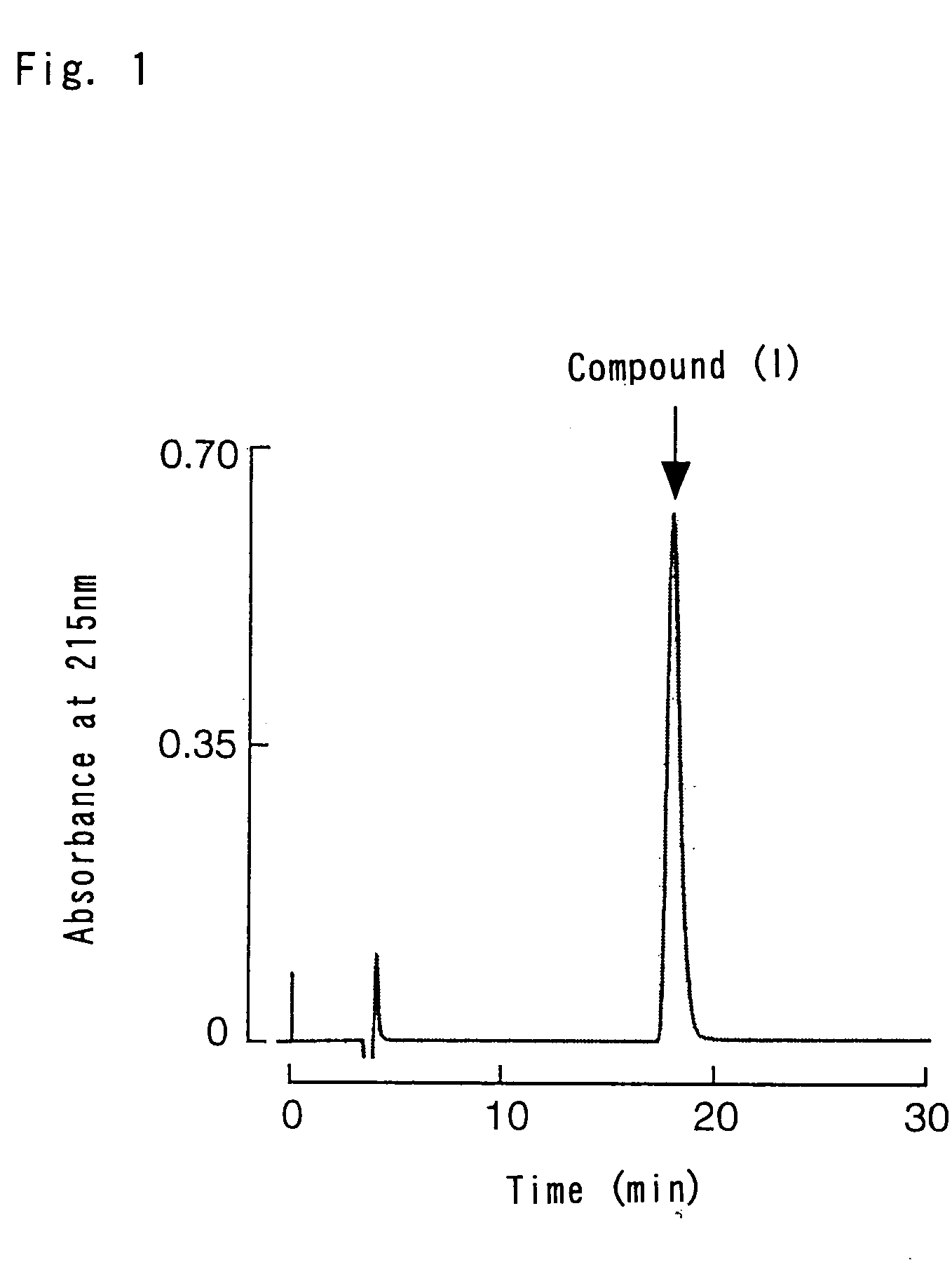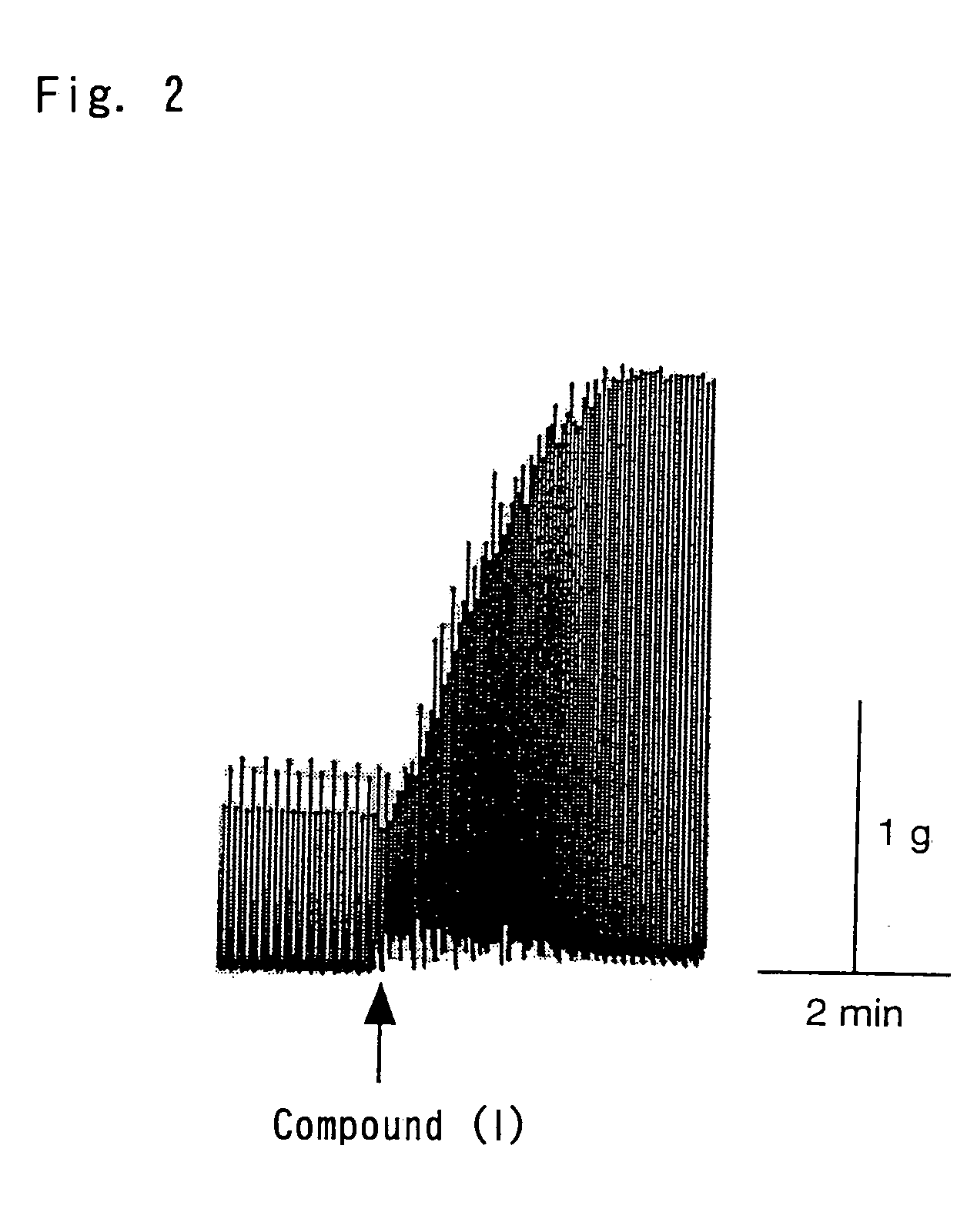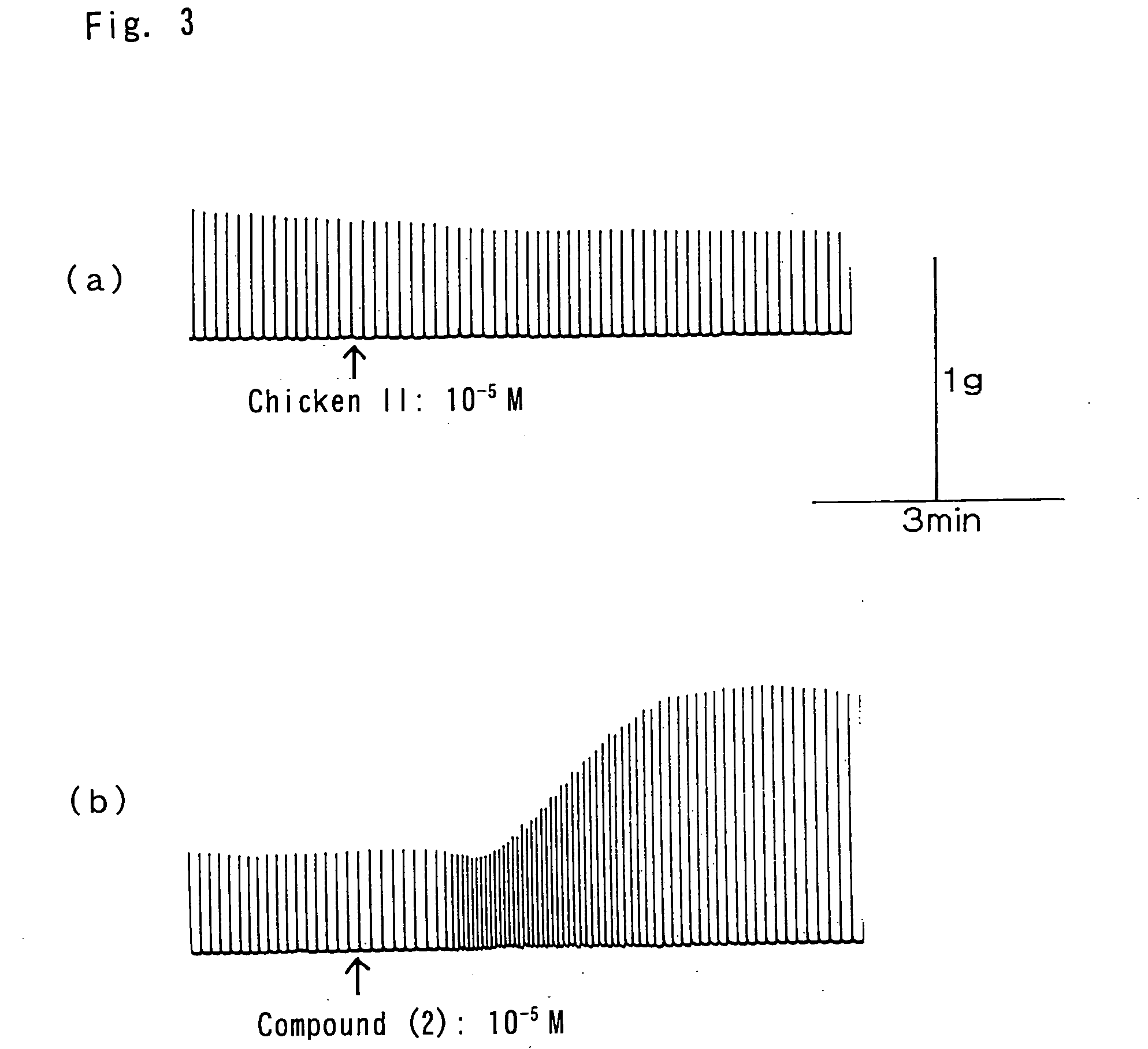Novel gonadotropin-releasing hormone, precursor peptides thereof and genes encoding the same
a gonadotropin-releasing hormone and a precursor peptide technology, applied in the field of neuropeptides, can solve the problems of not yet isolated gnrh from octopuses, and its structure has not been determined
- Summary
- Abstract
- Description
- Claims
- Application Information
AI Technical Summary
Problems solved by technology
Method used
Image
Examples
example 1
Isolation of Cardioactive Peptides from O. vulgaris
(a) Crude Extraction
[0050] Brain tissue (including optic glands, optic tracts, and optic lobes) was taken from 100 specimens of Octopus vulgaris and was frozen in liquid nitrogen. The frozen tissue (180 g) was boiled in 900 ml distilled water for 10 min. After cooling, acetic acid was added to a concentration of 3% and the tissue was homogenized and then centrifuged at 4° C. at 12,000×g for 30 min to obtain a supernatant. To the resulting pellet, 200 ml of 3% acetic acid was added and the mixture was homogenized again for extraction. Subsequently, the mixture was centrifuged under the same conditions to obtain a supernatant. The supernatant was collected and concentrated in vacuo to a volume of about 200 ml to give crude extracts.
(b) Adsorption to C18 Cartridge
[0051] To the crude extracts obtained in the step (a) above, 5 ml of 6 M HCl was added and the mixture was centrifuged at 4° C. at 12,000×g for 30 min. The resulting sup...
example 2
Structure Determination of Compound (1)
[0057] The structure analysis of Compound (1), purified in Example 1, by Shimadzu PSQ-1 protein sequencer (manufactured by SHIMADZU Co., Ltd.) could not determine the amino acid sequence of the peptide due to the modified N-terminal. Thus, the amino acid composition of the peptide was analyzed instead. The results are shown in Table 1 below.
TABLE 1Amino acid composition of the peptideAmino acidpmolMolar ratioAsx51.11.5Glx42.61.3Ser32.71.0Gly70.02.1His57.91.7Pro37.11.1Tyr24.20.7Phe33.81.0
[0058] The molecular weight of Compound (1) was determined by Q-TOF (Micromass, manufactured by UK Co.,Ltd.). The measurements are shown in Table 2 below.
TABLE 3Mass spectrum data of the peptideMolecularCalculated valueCalculated valueCompoundformula(M + 2H)2+(M + 2H)2+Before treatmentC66H80N20O17713.30713.30with enzymeAfter treatmentC61H75N19O15657.79657.85with enzyme
[0059] It was determined from the analysis of the amino acid composition and the measureme...
example 3
Synthesis of Compound (1) by the Solid Phase Method
[0064] Using a fully automated peptide synthesizer 433A (PE Biosystems Japan), Compound (1) was synthesized according to FastMoc® chemistry.
[0065] In the synthesis, an Fmoc-NH-SAL-A resin (manufactured by WATANABE CHEMICAL INDUSTRIES, Ltd.) to serve as a solid support was used, along with pyroglutamic acid, Fmoc-Asn-(Trt), Fmoc-Tyr-(tBu), Fmoc-His-(Trt), Fmoc-Phe, Fmoc-Ser-(tBu), Fmoc-Gly, Fmoc-Trp-(tBoc), and Fmoc-Pro.
[0066] As used herein, Fmoc represents 9-fluorenylmethoxycarbonyl, tBu represents t-butyl, Trt represents trityl, and tBoc represents t-butyloxycarbonyl.
[0067] A 10 ml mixture of 2.5% 1,2-ethanedithiol / 2.5% water / 95% TFA containing 100 mg 2-methylindole was used for the purposes of cleavage of the crude peptide from the peptide resin upon completion of the reaction and deprotection of the crude peptide. After the reaction, the reaction mixture was filtered. Ether was then added to the filtrates to cause the peptid...
PUM
 Login to View More
Login to View More Abstract
Description
Claims
Application Information
 Login to View More
Login to View More - R&D
- Intellectual Property
- Life Sciences
- Materials
- Tech Scout
- Unparalleled Data Quality
- Higher Quality Content
- 60% Fewer Hallucinations
Browse by: Latest US Patents, China's latest patents, Technical Efficacy Thesaurus, Application Domain, Technology Topic, Popular Technical Reports.
© 2025 PatSnap. All rights reserved.Legal|Privacy policy|Modern Slavery Act Transparency Statement|Sitemap|About US| Contact US: help@patsnap.com



